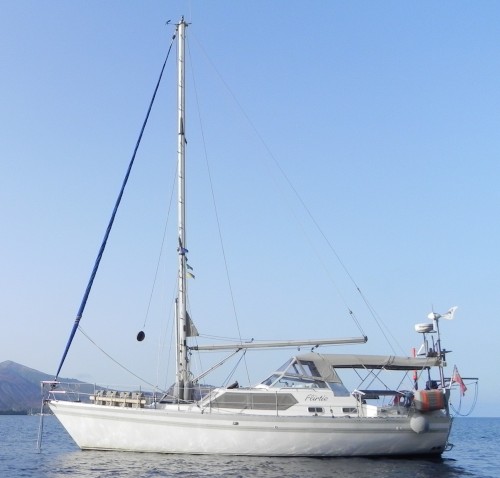learning experiences - 12v batteries

Keeping mobile phones and a laptop charged has proved challenging whilst away. Our main boat batteries have sufficient capacity to run the boat's domestic services but unfortunately little else.
We rely on solar power and wind power to keep the batteries charged when away from shore power. With the mixed weather we have had this summer neither were particularly effective (with the exception of the windy days whilst in Plymouth!). As a result we found ourselves having to run the generator every other day just to keep the batteries charged for domestic use. Whilst running the generator we could easily charge the mobile phones and laptop at the same time but it is not our intention to run the generator this frequently in future given that when we head South we are hopeful that the solar panel will be more effective.
Irreversible damage can be done to a battery or bank of batteries when they are discharged repeatedly below 50% (12.06 volts) reducing their capacity. To ensure this didn't happen we monitored the batteries daily. Additionally we worked out the usage of every appliance on board which provided us with a good indication as to which items where power hungry. Not surprisingly, the fridge and the filament light bulbs drew the highest amps. The fridge is one of the most efficient on the market so not much can be done about that, but the filament bulbs have now been changed to LED bulbs (1 watt vs 10 watt) which draw minimum current.
Whilst the saving does not appear to be significant, when you multiply the number of lights in use by the number of hours that they are switched on it's surprising how much current is consumed.
Interestingly, the car radio was also relatively power hungry (2 watts in standby mode, 8 watts in radio mode) so this has now been resolved by purchasing a cheap AA battery operated, non digital radio and banning the use of the car radio whilst away from shore power.
As a final improvement we have re-worked our battery banks such that we now have 255 amps (3 x 85 amp batteries) available for domestic use and 85 amps (1 x 85 amp battery) for engine use whereas we had 170 amps (2 x 85 amp batteries) apiece.
With our increased capacity we should now be able to run our inverter more frequently therefore keeping our laptop and phones charged.
On a final note, in order to be able to use the laptop for more than it's internal battery life permits, we will be purchasing an external power slice which will allow us to use the laptop for up to 8 hours before having to resort to recharging.
We rely on solar power and wind power to keep the batteries charged when away from shore power. With the mixed weather we have had this summer neither were particularly effective (with the exception of the windy days whilst in Plymouth!). As a result we found ourselves having to run the generator every other day just to keep the batteries charged for domestic use. Whilst running the generator we could easily charge the mobile phones and laptop at the same time but it is not our intention to run the generator this frequently in future given that when we head South we are hopeful that the solar panel will be more effective.
Irreversible damage can be done to a battery or bank of batteries when they are discharged repeatedly below 50% (12.06 volts) reducing their capacity. To ensure this didn't happen we monitored the batteries daily. Additionally we worked out the usage of every appliance on board which provided us with a good indication as to which items where power hungry. Not surprisingly, the fridge and the filament light bulbs drew the highest amps. The fridge is one of the most efficient on the market so not much can be done about that, but the filament bulbs have now been changed to LED bulbs (1 watt vs 10 watt) which draw minimum current.
Whilst the saving does not appear to be significant, when you multiply the number of lights in use by the number of hours that they are switched on it's surprising how much current is consumed.
Interestingly, the car radio was also relatively power hungry (2 watts in standby mode, 8 watts in radio mode) so this has now been resolved by purchasing a cheap AA battery operated, non digital radio and banning the use of the car radio whilst away from shore power.
As a final improvement we have re-worked our battery banks such that we now have 255 amps (3 x 85 amp batteries) available for domestic use and 85 amps (1 x 85 amp battery) for engine use whereas we had 170 amps (2 x 85 amp batteries) apiece.
With our increased capacity we should now be able to run our inverter more frequently therefore keeping our laptop and phones charged.
On a final note, in order to be able to use the laptop for more than it's internal battery life permits, we will be purchasing an external power slice which will allow us to use the laptop for up to 8 hours before having to resort to recharging.




Comments